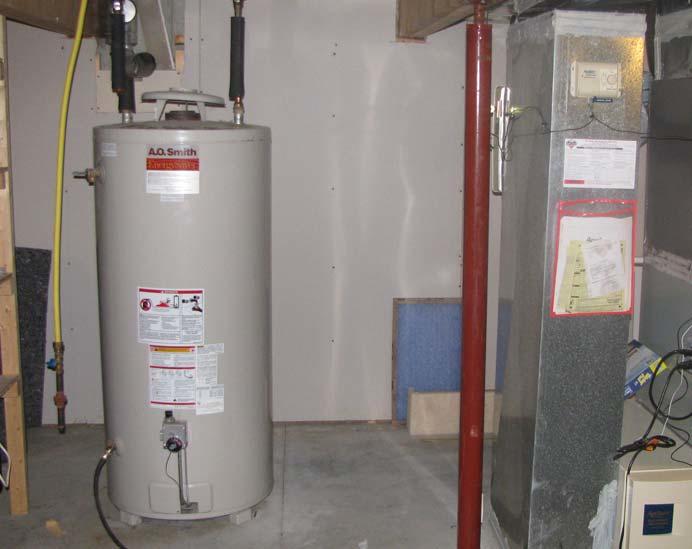Key Care Techniques for Your Home's Hot Water System
Key Care Techniques for Your Home's Hot Water System
Blog Article
Have you been on the lookout for answers concerning How to Maintain Your Water Heater & Prolong its Life?

Hot water is crucial for day-to-day comfort, whether it's for a refreshing shower or washing dishes. To ensure your hot water system runs efficiently and lasts longer, regular maintenance is essential. This short article offers useful suggestions and insights on exactly how to preserve your home's hot water system to avoid disruptions and costly repair work.
Introduction
Maintaining your home's hot water system may seem difficult, however with a few easy steps, you can ensure it runs efficiently for several years to find. This guide covers everything from recognizing your warm water system to DIY maintenance tips and knowing when to call in specialist help.
Relevance of Keeping Your Warm Water System
Routine maintenance not only expands the life expectancy of your hot water system but also guarantees it runs effectively. Neglecting upkeep can bring about reduced effectiveness, higher power expenses, and even premature failing of the system.
Indications Your Hot Water System Demands Upkeep
Understanding when your hot water system requires interest can prevent significant concerns. Watch out for signs such as irregular water temperature, strange sounds from the heater, or corroded water.
Purging the Hot Water Heater
Flushing your water heater removes debris accumulation, enhancing efficiency and lengthening its life.
Monitoring and Replacing Anode Rods
Anode poles avoid deterioration inside the storage tank. Inspecting and changing them when worn is crucial.
Complex Concerns Needing Professional Assistance
Examples consist of major leakages, electric problems, or if your hot water heater is regularly underperforming.
Regular Expert Upkeep Perks
Professional upkeep can consist of extensive examinations, tune-ups, and making sure compliance with security standards.
Checking and Adjusting Temperature Setups
Changing the temperature level settings makes sure optimal efficiency and safety and security.
DIY Tips for Upkeep
You can perform a number of maintenance tasks on your own to keep your warm water system in top condition.
Looking for Leaks
On a regular basis evaluate pipes and connections for leaks, as these can bring about water damage and higher costs.
Understanding Your Hot Water System
Prior to diving into maintenance jobs, it's valuable to recognize the basic elements of your warm water system. Typically, this includes the hot water heater itself, pipelines, anode rods, and temperature controls.
Month-to-month Maintenance Tasks
Regular regular monthly checks can aid capture minor problems prior to they rise.
Testing Pressure Alleviation Valves
Examining the pressure relief valve ensures it works appropriately and prevents excessive pressure accumulation.
Shielding Pipelines
Insulating hot water pipes minimizes warmth loss and can conserve energy.
When to Call a Professional
While DIY maintenance is advantageous, some issues require expert competence.
Verdict
Normal upkeep of your home's hot water system is essential for efficiency, durability, and expense financial savings. By complying with these ideas and recognizing when to look for specialist aid, you can make certain a trusted supply of warm water without unanticipated disturbances.
How to Maintain an Instant Hot Water Heater
Before tinkering with your hot water heater, make sure that it’s not powered on. You also have to turn off the main circuit breaker and shut off the main gas line to prevent accidents. Also turn off the water valves connected to your unit to prevent water from flowing into and out of the appliance. 2. When you’re done, you have to detach the purge valves’ caps. These look like the letter “T†and are situated on either side of the water valves. Doing so will release any pressure that has accumulated inside the valves while at the same time avoid hot water from shooting out and burning your skin. 3. When the purge valves’ caps are removed, you have to connect your hosing lines to the valves. Your unit should have come with three hoses but if it didn’t, you can purchase these things from any hardware or home repair shops. You can also get them from retail stores that sell water heating systems. Read the user’s manual and follow it to complete this task properly. When the hosing lines are connected, open the purge port’s valves. 4. You should never use harsh chemical cleaners or solutions when cleaning your unit. Make use of white vinegar instead. It should be undiluted and you’ll probably use about 2 gallons. 5. Now flush your water heater. This task should probably take about 40 minutes. We can’t give you specific directions for this because the procedure is carried out depending on the type, model and brand of your heater. With that being said, refer to the user’s manual. 6. When you’re done draining the unit, you have to turn off the purge port valves again. Remove the hosing lines that you earlier installed on each of the water valves. Put the valve caps (purge port) back in their respective places and be very careful so as not to damage the rubber discs that are found inside these caps. 7. Now that everything’s back in place, check your user’s manual again to find out how to reactivate your water heating system. 8. Once it is working, turn one of your hot water faucets on just to let air pass through the heater’s water supply pipes. Leave the tap on until water flows smoothly out of it. https://www.orrplumbing.com/blog/2014/september/how-to-maintain-an-instant-hot-water-heater/

Hopefully you enjoyed our article about Tips For Maintaining Your Hot Water Heater. Thanks so much for spending some time to read our article post. So long as you appreciated our post please make sure you remember to pass it around. Thanks a bunch for being here. Come back soon.
Schedule Appointment Now Report this page